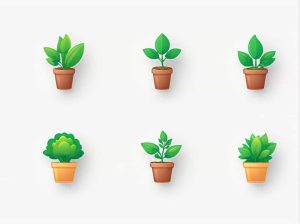Flowers come in many different arrangements and one of the most common is the raceme. Understanding racemes can help gardeners botanists and flower enthusiasts identify plants more easily. But what exactly is a raceme and how does it differ from other types of flower arrangements?
This topic will explain what a raceme is its characteristics examples of plants with racemes and how it compares to other inflorescence types.
What Is a Raceme?
A raceme is a type of inflorescence which is the arrangement of flowers on a plant’s stem. In a raceme flowers are attached to a central stem (rachis) by short stalks (pedicels). The flowers bloom from the bottom upward meaning the youngest flowers are at the top while the older ones are near the base.
Key Features of a Raceme:
- Flowers bloom sequentially from the bottom to the top.
- Each flower has its own short stalk (pedicel) attached to the main stem.
- The main stem grows continuously producing new flowers at the top.
- The overall shape is elongated and can be upright or drooping.
Examples of Plants with Raceme Inflorescence
Many common plants have racemes. Some of the most well-known examples include:
1. Larkspur (Delphinium)
Larkspur flowers are arranged in a tall vertical raceme making them a favorite in gardens. Their bright colors attract pollinators like bees and butterflies.
2. Snapdragon (Antirrhinum)
Snapdragons have dense racemes with flowers opening from the bottom upward. They are often used in flower beds for their vibrant appearance.
3. Foxglove (Digitalis)
Foxglove plants produce bell-shaped flowers in a long raceme creating a striking display in gardens and wild landscapes.
4. Orchids (Certain Species)
Some orchids like Cymbidium orchids display their blooms in a raceme arrangement where multiple flowers emerge from a single stem.
5. Mustard (Brassica Species)
Many mustard plants have raceme-type inflorescences which is common in plants from the Brassicaceae family.
How a Raceme Differs from Other Inflorescence Types
Racemes are just one of many types of inflorescence structures in plants. Here’s how they compare to other common types:
Raceme vs. Spike
- Raceme: Flowers have stalks (pedicels) that attach to the main stem.
- Spike: Flowers are attached directly to the main stem without pedicels.
- Example of a Spike: Lavender and wheat.
Raceme vs. Panicle
- Raceme: Simple with flowers on a single central stem.
- Panicle: A branched version of a raceme where multiple racemes emerge from a main stem.
- Example of a Panicle: Rice and oats.
Raceme vs. Umbel
- Raceme: Flowers are arranged along a central stem.
- Umbel: Flowers arise from a single point forming a rounded or flat-topped cluster.
- Example of an Umbel: Carrot and dill.
Raceme vs. Corymb
- Raceme: Younger flowers are at the top older ones at the bottom.
- Corymb: All flowers reach the same height despite growing at different points along the stem.
- Example of a Corymb: Yarrow.
Importance of Raceme Inflorescence in Plants
Racemes play a significant role in plant survival and reproduction. Here’s why they are beneficial:
1. Attracting Pollinators
Since raceme flowers bloom from the bottom up they provide a continuous supply of nectar attracting pollinators over an extended period.
2. Efficient Seed Production
With flowers blooming in sequence plants can spread out their reproductive process increasing the chances of successful pollination and seed development.
3. Better Adaptation to the Environment
Tall racemes help flowers stand above competing vegetation improving visibility to pollinators and ensuring better access to sunlight.
How to Grow and Care for Raceme Flowers
If you want to grow plants with racemes in your garden here are some essential tips:
1. Choose the Right Soil
Most raceme-bearing plants prefer well-draining soil with good moisture retention. Adding organic compost can improve soil quality.
2. Provide Sufficient Sunlight
Many raceme flowers like snapdragons and foxgloves thrive in full sun. Make sure they receive at least 6 hours of sunlight daily.
3. Water Consistently
Keep the soil evenly moist but not waterlogged. Overwatering can lead to root rot especially in plants like orchids.
4. Prune for Better Growth
Removing spent flowers (deadheading) encourages plants to produce more blooms and maintain their raceme shape.
5. Protect from Pests
Watch out for aphids caterpillars and fungal infections which can damage raceme flowers. Using natural pest control methods can help maintain plant health.
A raceme is a beautiful and efficient floral arrangement that allows flowers to bloom in sequence along a central stem. It is commonly found in plants like larkspur snapdragons foxgloves and mustard plants.
Understanding raceme inflorescences can help gardeners and plant enthusiasts identify flowers more easily and care for them effectively. Whether you’re growing wildflowers garden ornamentals or food crops recognizing plant structures like racemes can enhance your appreciation of nature.



